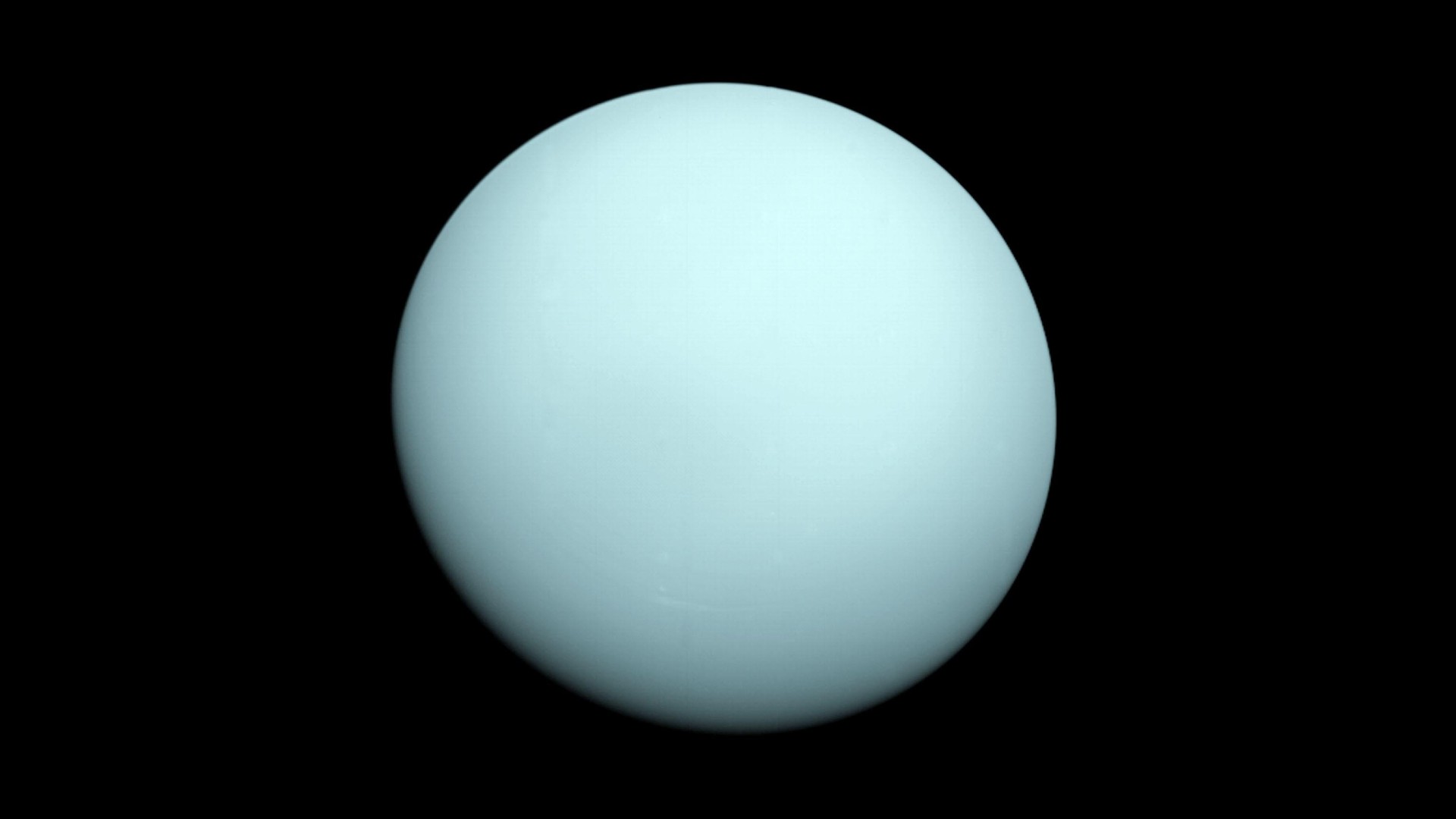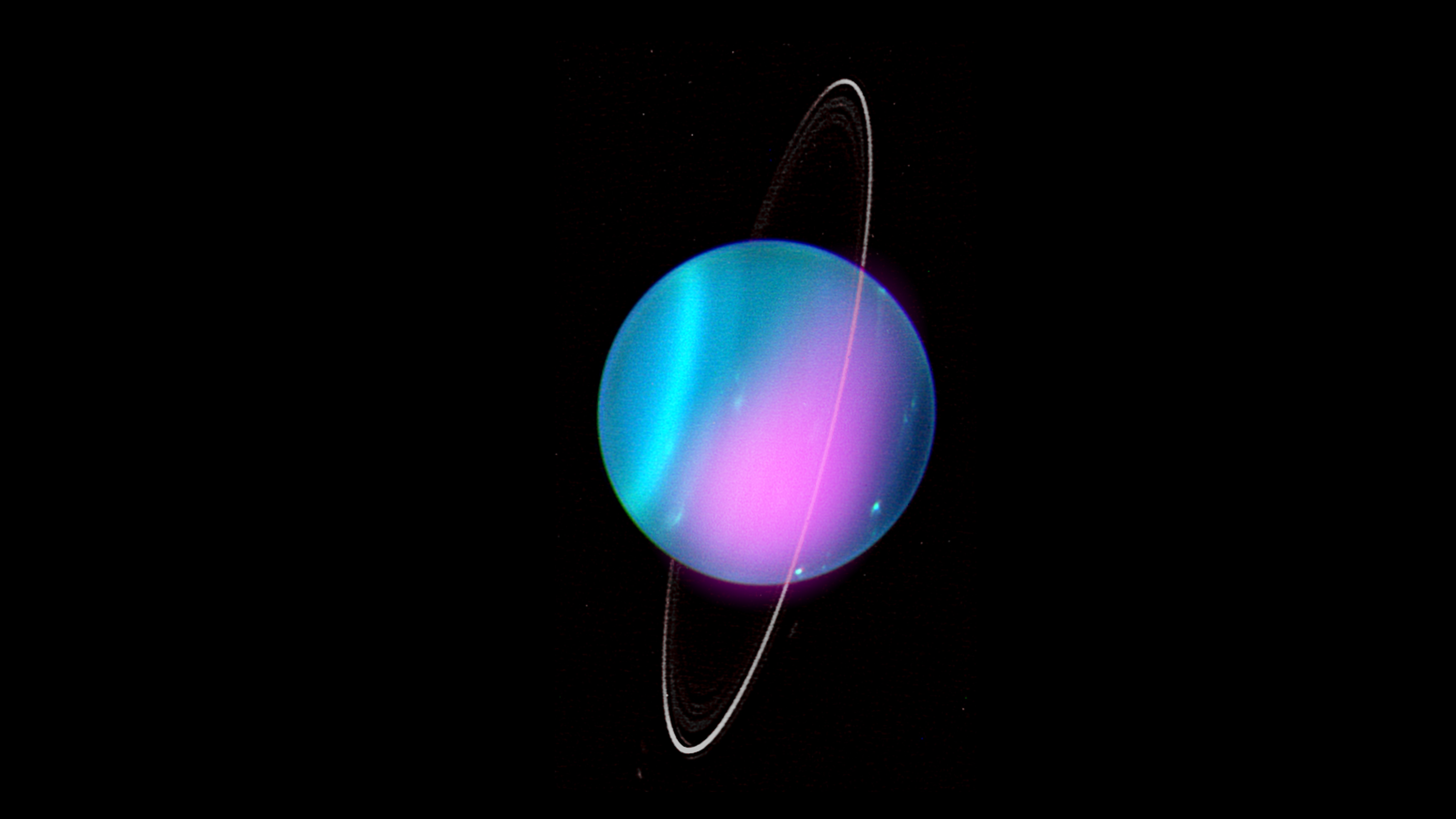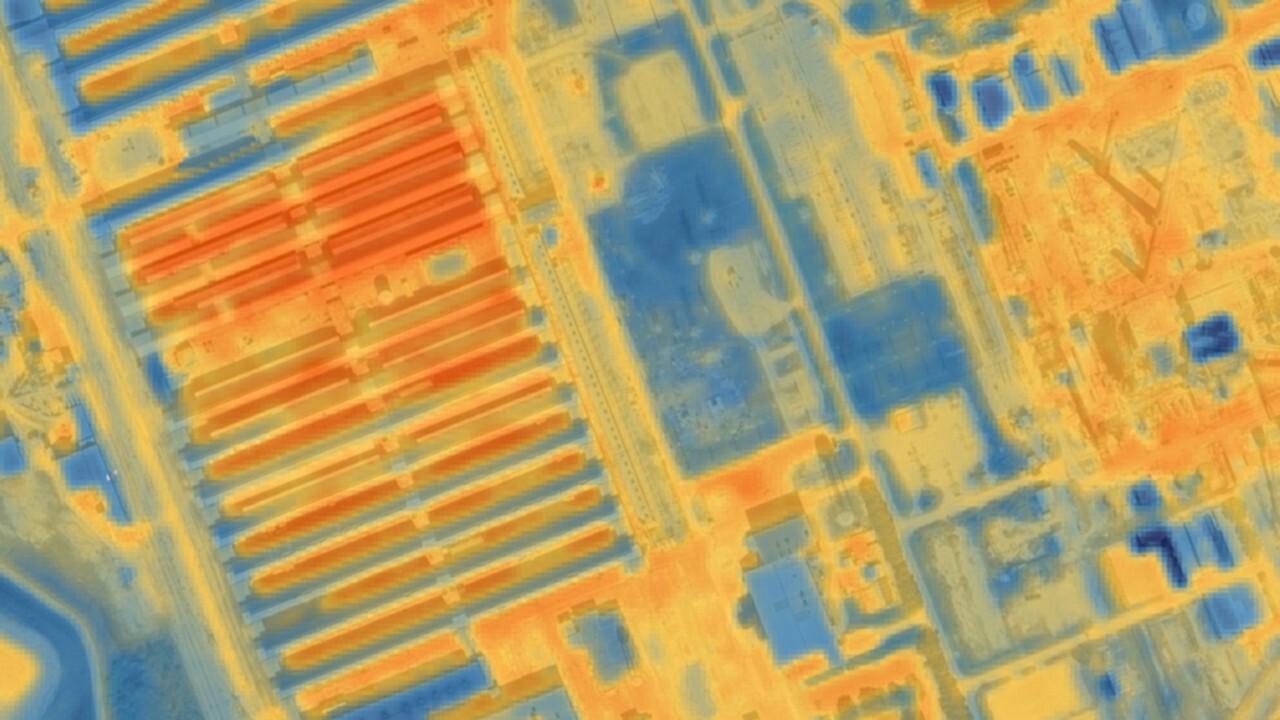Uranus up close: What proposed NASA 'ice giant' mission could teach us
Uranus and Neptune remain largely mysterious.

A mission to Uranus is now the top future-mission priority of NASA planetary scientists, and exploration of this mysterious ice giant may shed light on a kind of planet now known to be one of the most common in the universe, researchers say.
Since astronomers discovered the first exoplanets orbiting distant stars more than 30 years ago, one of the most common kinds of alien worlds that scientists have detected are ice giants. Whereas gas giants such as Jupiter and Saturn are, as their name suggests, mostly gas, ice giants such as Uranus and Neptune are rich in heavier elements.
Much remains unknown about Uranus and Neptune. Whereas the solar system's six innermost planets — Mercury, Venus, Earth, Mars, Jupiter and Saturn — have all had spacecraft in orbit around them collecting insights for scientists, to date Uranus and Neptune have only experienced flybys more than 30 years ago, both from NASA's Voyager 2 probe in 1986 and 1989. These brief encounters yielded tantalizing views of the planets that left behind more questions than previously imagined, Kathleen Mandt, a planetary scientist at The Johns Hopkins University Applied Physics Laboratory in Maryland, told Space.com.
Related: Photos of Uranus, the tilted giant planet
This dearth of knowledge on the ice giants has led the planetary science community to select a mission to Uranus as the highest priority for NASA's next large-scale "flagship" mission in the National Academies of Sciences, Engineering and Medicine's 2023-2032 Planetary Science Decadal Survey.
"The potential findings will be groundbreaking in the same way that the Cassini mission has revolutionized our understanding of Saturn, its moons — especially Titan — and its rings," Mandt said.
The proposal involves both an orbiter to gather data about Uranus over time and a probe dropped into Uranus' atmosphere to scan the planet from the inside. The aim of the mission — currently given the placeholder name of the Uranus Orbiter and Probe (UOP) — is to explore how Uranus and the rest of the solar system formed and to help solve mysteries regarding the planet, its moons and its rings. The mission is recommended to last for at least five years.
Breaking space news, the latest updates on rocket launches, skywatching events and more!
One of Uranus' strangest features is the fact that, unlike the solar system's other planets, Uranus is tilted so far that it essentially orbits the sun on its side, with the axis of its spin nearly pointing at the star.
"The tilt is crazy — it's the only planet in the solar system that is completely on its side," Mandt said.
This unusual orientation might be due to a collision with a planet-size body, or several small bodies, soon after Uranus formed. "We can figure out if this is true by studying what the planet is made of and its interior structure," Mandt said.
The sideways nature of Uranus causes the planet to experience extreme seasonal variations over its 84-Earth-year orbit unlike those of any of the solar system's other planets, and what little astronomers can see of the world from Earth cannot explain what they know of its weather patterns. The UOP can help shed light on Uranus's atmosphere, with the probe gathering detailed wind and temperature data at one location and the orbiter collecting information across the entire planet, Mandt said.
Related: Why scientists want NASA to send a flagship mission to Uranus

Uranus's tilt also limits what astronomers can see of its moons. For example, Voyager 2 could only image the southern hemispheres of Uranus' satellites. What the probe did see was unexpected. Uranus's five largest moons, which scientists predicted were cold, dead worlds, being too small to hold much of the heat from their creation, all showed evidence of recent surface activity. This raises the possibility that one or more of these moons, such as Ariel, Titania and Oberon, could have potentially habitable liquid water oceans underneath ice shells.
The UOP will image the surfaces of the moons in their entirety to search for ongoing geological activity. It will also measure whether their magnetic fields vary in their interiors due to the presence of liquid water, Mandt said.
In addition, Uranus has nine very dense, narrow rings around it that suggest the existence of "shepherd moons" whose gravitational influence kept these rings from rapidly spreading out and losing their sharp edges. The UOP can help search for these extra shepherding moons, and also analyze the unexpectedly dark ring particles, whose composition is clearly different from that of the surfaces of Uranus' moons.
The mission to Uranus may also shed light not only on the origins and evolution of the solar system, but those of distant planetary systems as well.
"There are so many ways that the ice giants will help us to learn about exoplanets," Mandt said. "One of the largest groups of exoplanets that have been discovered are similar in size and mass to Uranus and Neptune. We want to know what these planets are made of and how the interior is structured. We also want to know more about the weather on the planet and how that compares to similar exoplanets."
As giant planets form and migrate over time, they play major roles in the birth and development of other worlds. Although scientists have gotten close looks at the solar system's two gas giants, they also need more data on Uranus and Neptune to reconstruct the solar system's history. The UOP's probe can analyze nitrogen isotopes and levels of noble gases in Uranus' atmosphere to help verify which model of giant planet formation and migration may be the most accurate, Mandt said.
"We can see evidence in exoplanet systems that giant planets migrate in many different ways — the most obvious one is hot Jupiters that must have formed far away and moved in really close to their stars," Mandt said. "Knowing how our planets formed and migrated helps us to know what did and didn't happen in exoplanet systems."
In addition, Uranus' magnetic field is quite unusual, in that it is not only tilted 60 degrees from the planet's axis of spin but also offset from the center of the planet. It remains a mystery as to how a planet can produce such a field, Mandt said.
The UOP is recommended to launch by 2032 to help the spacecraft use Jupiter's massive gravity to slingshot it toward Uranus. This would mean the mission would arrive well before Uranus' northern autumn equinox in 2050, ensuring full visibility of the moons. Trajectories after 2032 that do not use Jupiter's gravity but still arrive before the equinox are possible, but would deliver a smaller probe into orbit carrying fewer instruments or take longer to arrive.
"We will learn about how and where Uranus formed, what it's made of, and how the interior is structured," Mandt said. And the mission to Uranus may pave the way to its more-distant cousin Neptune as well, she added.
Mandt detailed the proposed mission in a paper in the Feb. 17 issue of the journal Science.
Follow us on Twitter @Spacedotcom and on Facebook.

Charles Q. Choi is a contributing writer for Space.com and Live Science. He covers all things human origins and astronomy as well as physics, animals and general science topics. Charles has a Master of Arts degree from the University of Missouri-Columbia, School of Journalism and a Bachelor of Arts degree from the University of South Florida. Charles has visited every continent on Earth, drinking rancid yak butter tea in Lhasa, snorkeling with sea lions in the Galapagos and even climbing an iceberg in Antarctica. Visit him at http://www.sciwriter.us
